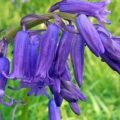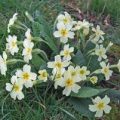Common dog violet Viola riviniana
Table of Contents
Keep an eye out in woodland areas during the springtime for common dog violet, a beautiful little wildflower that’s often found hiding amongst the bluebells and primroses. The attractive blue – purple flowers provide a valuable early source of nectar for pollinators.

Plant family: Violaceae
Aliases: Blue mice, wood violet
Flowering period: April – June
Flower colour: Purple -violet
Preferred soil type: Most types
Habitat: Woodland edges, hedgerows, verges
Status: Common
General information
An early flowering, herbaceous, perennial wildflower found in a variety of habitats, including woodland, hedgerows, roadside banks & verges and grassland. Dog violets are low growing plants, that begins to bloom during the spring time, lasting until the early summer months.
Common dog violet has been in decline during the past few decades, this is mainly due to habitat loss and modern farming practices. Although they are versatile wildflowers and will grow on most types of soil they prefer acid soils growing to a maximum height of 15cm, which leaves them vulnerable to being smothered by other vegetation and plants.
Identification

Flowers: The scentless flowers are blue – purple in colour, 15 – 25mm in diameter, with 5 petals. The central part of the flower has dark purple lines – veins, which is more pronounced on the lower petal.
Leaves: The heart shaped leaves of common dog violet are mostly smooth, borne on long stalks and can be up to 40mm long, with the leaf margins having rounded teeth.
Value for wildlife
Common dog violet provides an early source of pollen and nectar for pollinators, such as bees and butterflies. The plants leaves are an important food source of the larvae of numerous species of fritillary butterflies, including the Small pearl-bordered, the high brown, the dark green, the pearl-bordered and the silver-washed fritillaries.
Uses for common dog violet
The flowers and young leaves are edible, they can be eaten either raw or cooked and can be used in salads, sandwiches and wraps. The leaves can be used to make tea and to thicken up soups.

This work is licensed under a Creative Commons Attribution 4.0 International License.
You are free to use, share and adapt any of the images on this page, under the condition we receive a followed backlink to our website https://diversegardens.co.uk as the image source.












